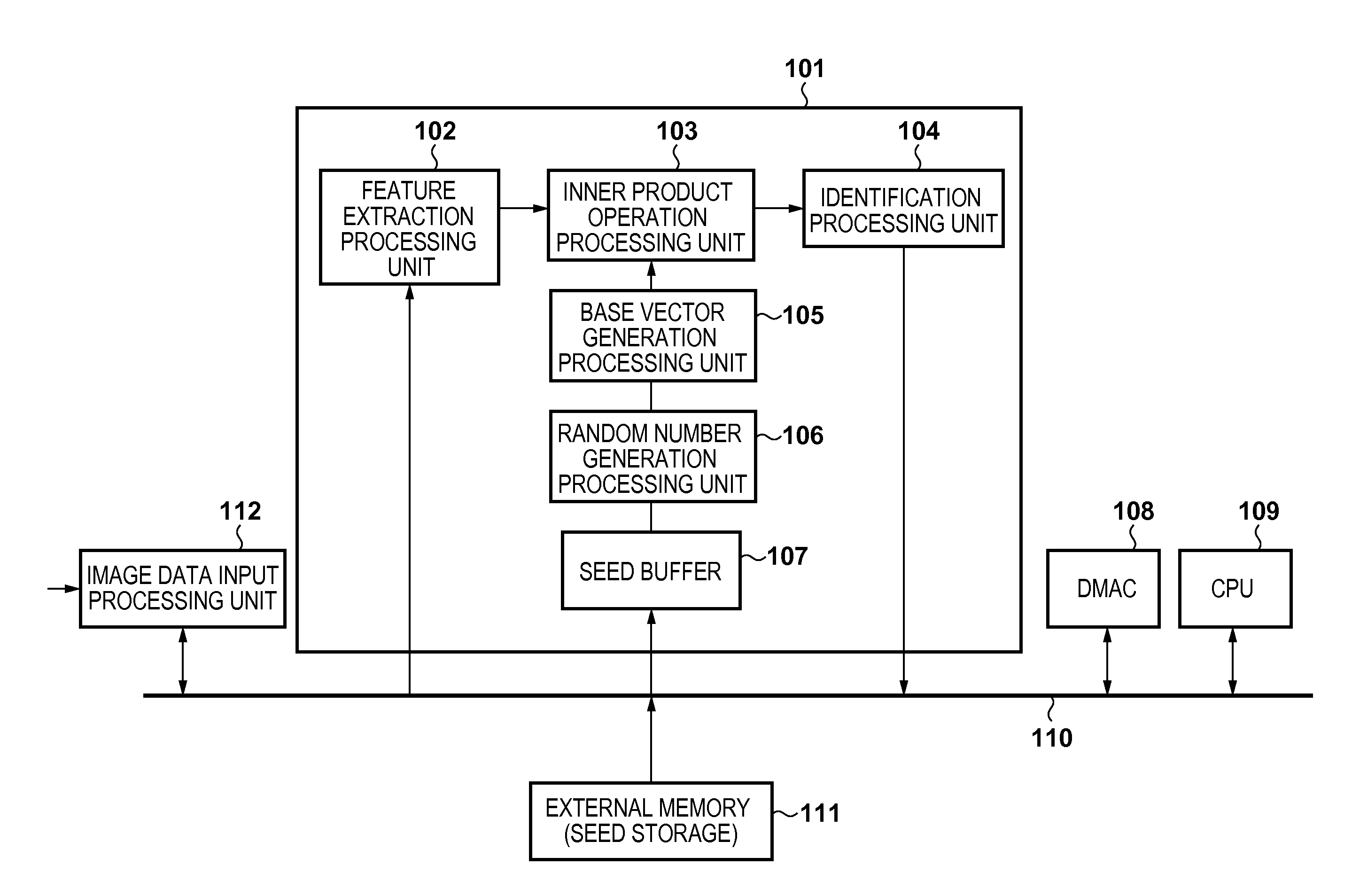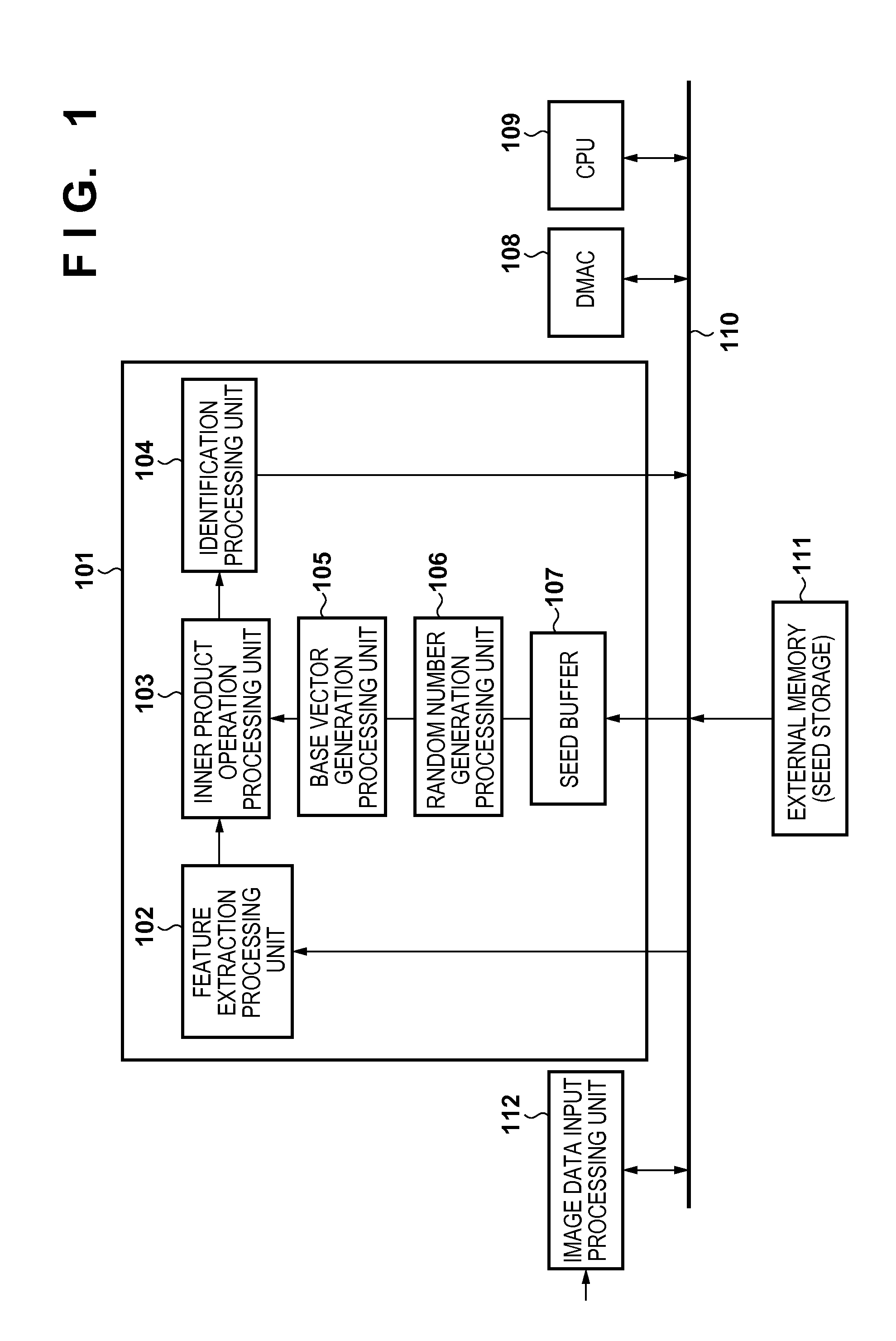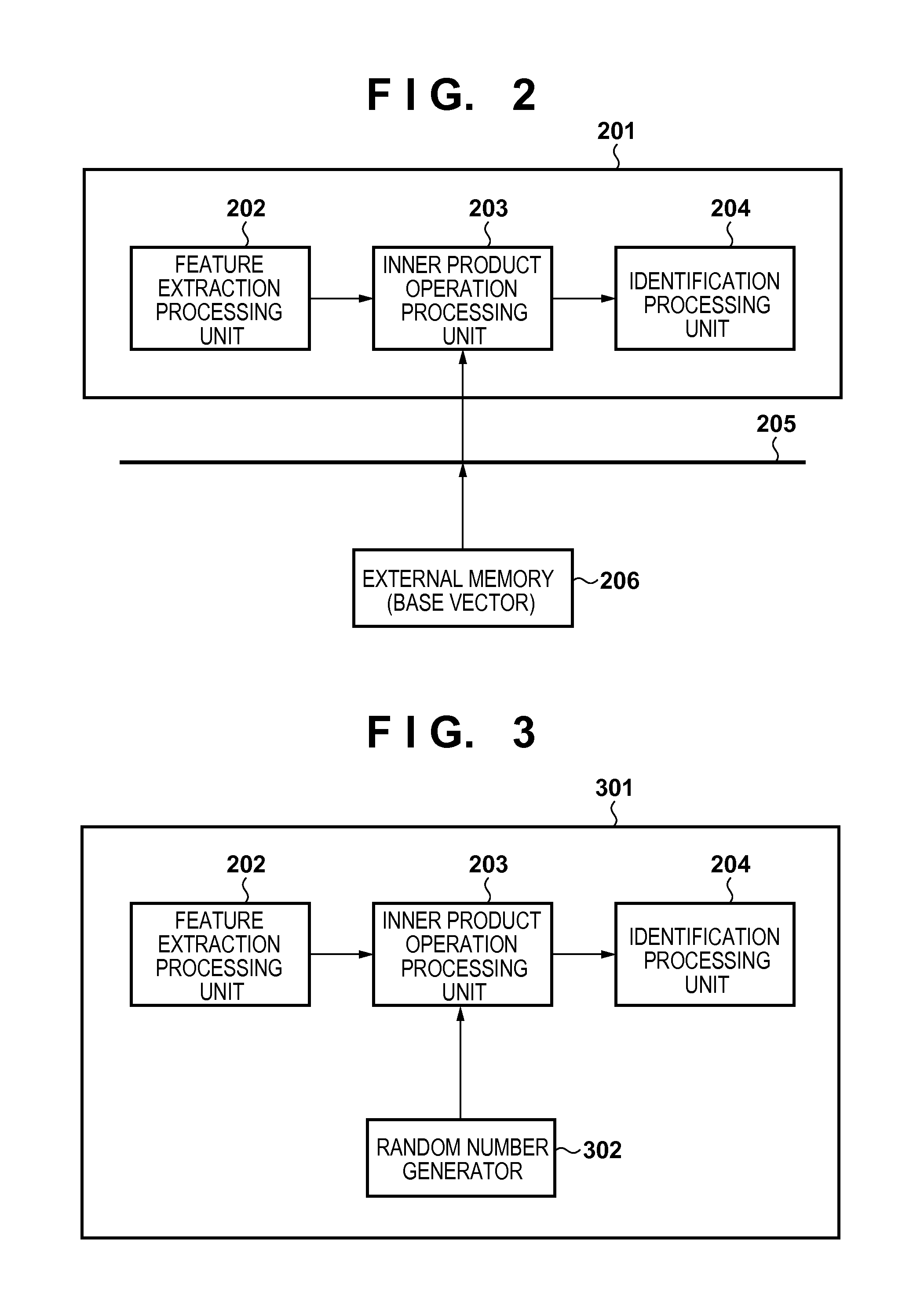Information processing apparatus and information processing method
a technology of information processing and information processing equipment, applied in the field of projection operation, can solve the problem of 3 not being applied, and achieve the effect of simple implementation of projection processing and higher speed
- Summary
- Abstract
- Description
- Claims
- Application Information
AI Technical Summary
Benefits of technology
Problems solved by technology
Method used
Image
Examples
first embodiment
[0027]An example of the arrangement of an information processing apparatus according to the embodiment will be described with reference to a block diagram shown in FIG. 1. In this embodiment, an n-dimensional feature vector (transformation source vector) extracted from an image is transformed (undergoes dimension reduction) into a k (k<n)-dimensional (lower-dimensional) feature vector by random projection, and recognition processing is performed for the image using the transformed k-dimensional feature vector.
[0028]All of an image data input processing unit 112, an operation unit 101, a DMAC (Direct Memory Access Controller) 108, a CPU 109, and an external memory 111 are connected to a system bus 110, and can perform data communication via the system bus 110.
[0029]The external memory 111 is a DRAM connected to the system bus 110 via a memory controller (not shown), in which k random number generation seeds (random number seeds) are registered.
[0030]The image data input processing un...
second embodiment
[0074]In this embodiment, the difference from the first embodiment is that a CPU 109 generates (learns) desired random number seeds, and registers them in an external memory 111. The difference from the first embodiment will be mainly described below, and a description of the same points as in the first embodiment will be omitted. Processing of generating random number seeds and registering them in the external memory 111 will be described with reference to a flowchart shown in FIG. 10.
[0075]In step S1001, the CPU 109 initializes respective function units of an operation unit 101. In this initialization processing, for example, if a random number generation processing unit 106 can change the random number period (random number sequence length) and feedback arrangement of a linear feedback shift register by parameters, the parameters about the period and feedback arrangement are set. The random number sequence length is decided based on “the number of dimensions of a feature vector×t...
third embodiment
[0085]In this embodiment, a case in which the projection operation processing described in the first embodiment is applied to CNNs (Convolutional Neural Networks) will be explained. An example of the arrangement of the CNNs will be described with reference to FIG. 11. In this embodiment, the following description assumes that the CNNs detect a specific object from an input image.
[0086]The CNNs are formed from hierarchical feature extraction processing. FIG. 11 shows an example of three-layer CNNs in which the number of features of a first layer 1106 is 3, and the number of features of a second layer 1110 is 2, and the number of features of a third layer 1113 is 1. The CNNs are known as a method robust against variations of the appearance of a target object by the hierarchical feature extraction processing.
[0087]An image 1101 is input to the CNNs. Reference numerals 1103a to 1103c denote feature planes of the first layer 1106. The feature plane is an image data plane for storing a ca...
PUM
 Login to View More
Login to View More Abstract
Description
Claims
Application Information
 Login to View More
Login to View More - R&D
- Intellectual Property
- Life Sciences
- Materials
- Tech Scout
- Unparalleled Data Quality
- Higher Quality Content
- 60% Fewer Hallucinations
Browse by: Latest US Patents, China's latest patents, Technical Efficacy Thesaurus, Application Domain, Technology Topic, Popular Technical Reports.
© 2025 PatSnap. All rights reserved.Legal|Privacy policy|Modern Slavery Act Transparency Statement|Sitemap|About US| Contact US: help@patsnap.com



